Their fingers move nimbly as they weave, making swift work of the thin, dry leaves gathered in each hand. Through their expert movements, the bundle of foliage will transform into simple bracelets, two-toned hats, and sprawling woven mats. Occasionally, a member of the weaving group will ask a question, to which their kumu (teacher) will respond with patient advice.
In old Hawaiʻi, mea ulana (woven objects) were a ubiquitous feature of daily life: as sails of voyaging canoes, in homes as baskets and floor mats. With Western influence came the rise of pāpale (woven hats), but as manufactured items became readily available in the islands, mea ulana were in decline—and with them, the art of weaving lau hala, or the leaves of the hala tree.
By the late 20th century, only a few weavers remained. It wasn’t just the craft of weaving, with its intricate pattern work and precise steps, that needed saving. It was everything that made weaving possible: the knowledge and skill to tend to a hala tree, harvest its leaves, and transform them from tough stalks to malleable fronds.
In effort to perpetuate ulana lau hala (lau hala weaving), skilled practitioners formed weaving groups, often led by kumu whose mastery was gained over generations. Kumu would pass on the practice to their haumana (student), who would go on to become kumu themselves. New generations of weavers blossomed, nurtured by groups that made the art more accessible. Today, they remain vital gathering places for the craft, weaving together the work of many hands.
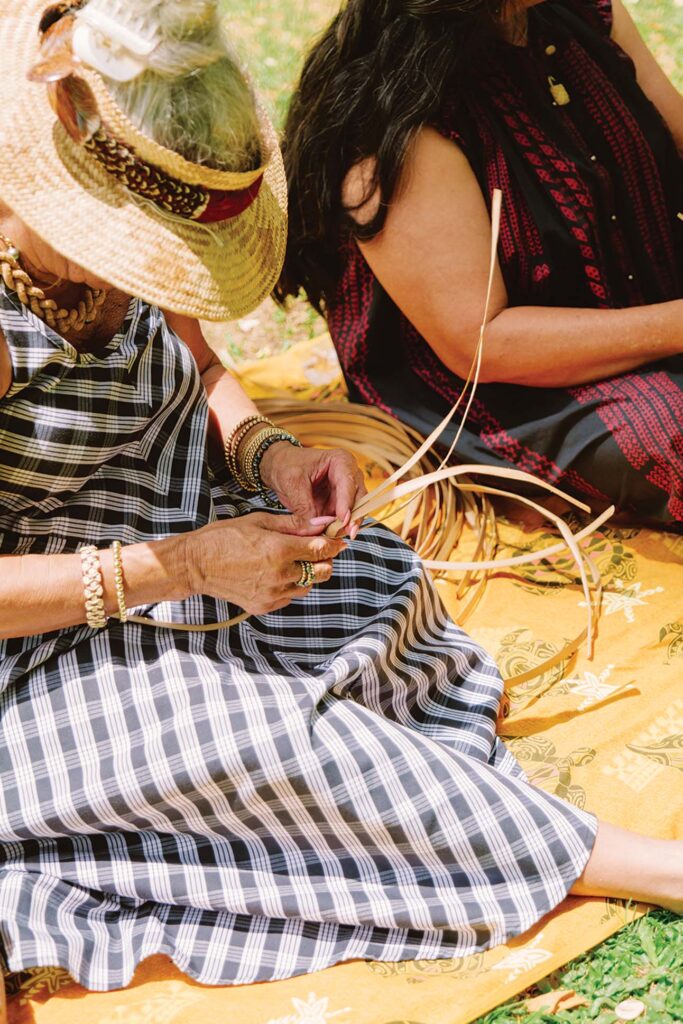
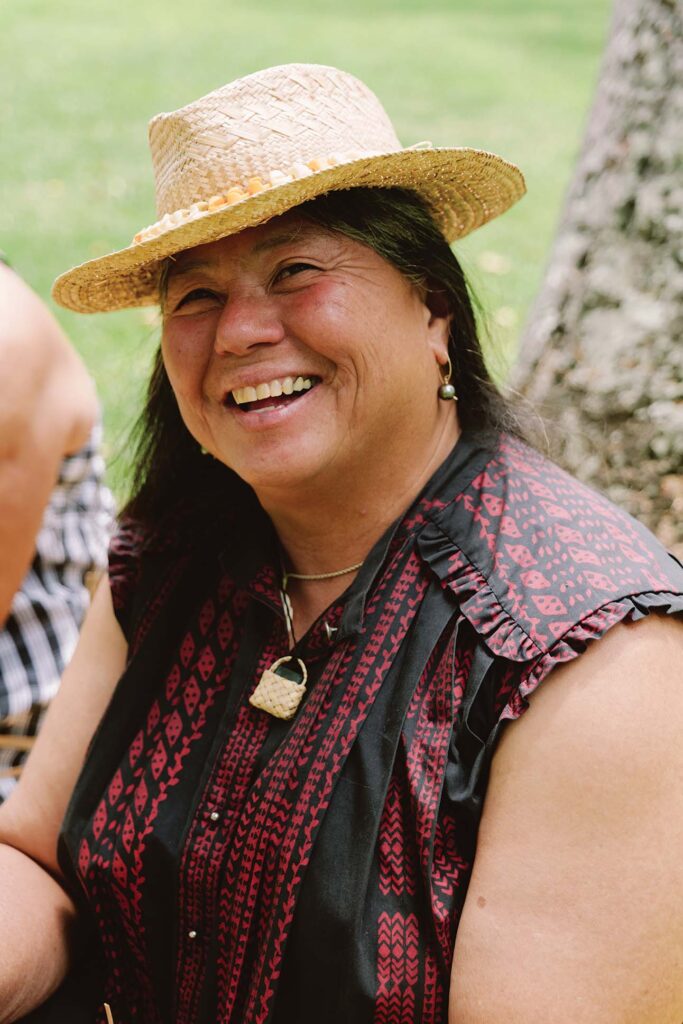
Ulana Me Ka Lokomaikaʻi
In 1997, master weavers Frank Masagatani and Aunty Gladys Grace founded Ulana Me Ka Lokomaikaʻi to perpetuate the art of lau hala, specifically pāpale. Together with other kumu, they committed to sharing the craft, a knowledge that, back then, was only passed on from one family member to another. Today, their weaving group is among the largest on Oʻahu, nurturing many kumu who went on to form their own groups.
“Over 40 years later, I still get that same electric feeling as when I started. Looking back, I’m so glad I paid attention to that feeling. I could have missed my calling in life.” — Marcia Omura, Kumu Ulana Pāpale Lau Hala
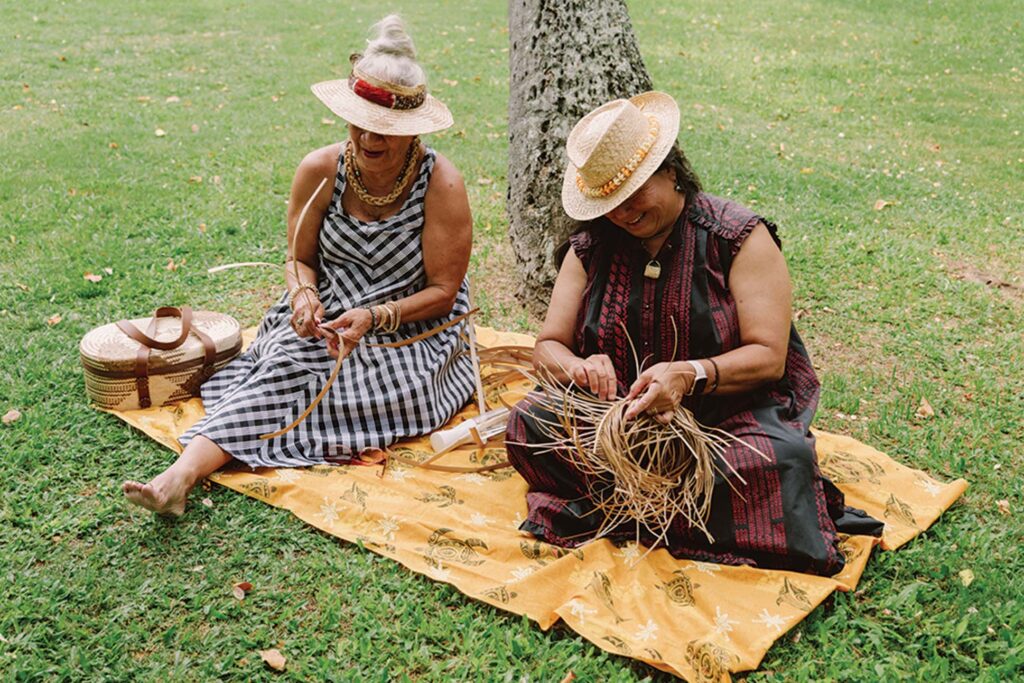
As kumu, we have the responsibility to pass on that ʻike (knowledge). And we, as haumana, are responsible to adhere to those teachings. It took me a while to find a student who fit into that category, who would continue to keep alive those traditions of my kumu.” — Ipolani Vaughan, Kumu Ulana Lau Hala
“You have to own this responsibility—this kuleana—to share what you’ve learned from your kumu, to preserve and perpetuate Hawaiian lau hala hat weaving by helping and teaching others in the same spirit. The hook goes in easy, then catches.” — Marcia Omura, Kumu Ulana Pāpale Lau Hala
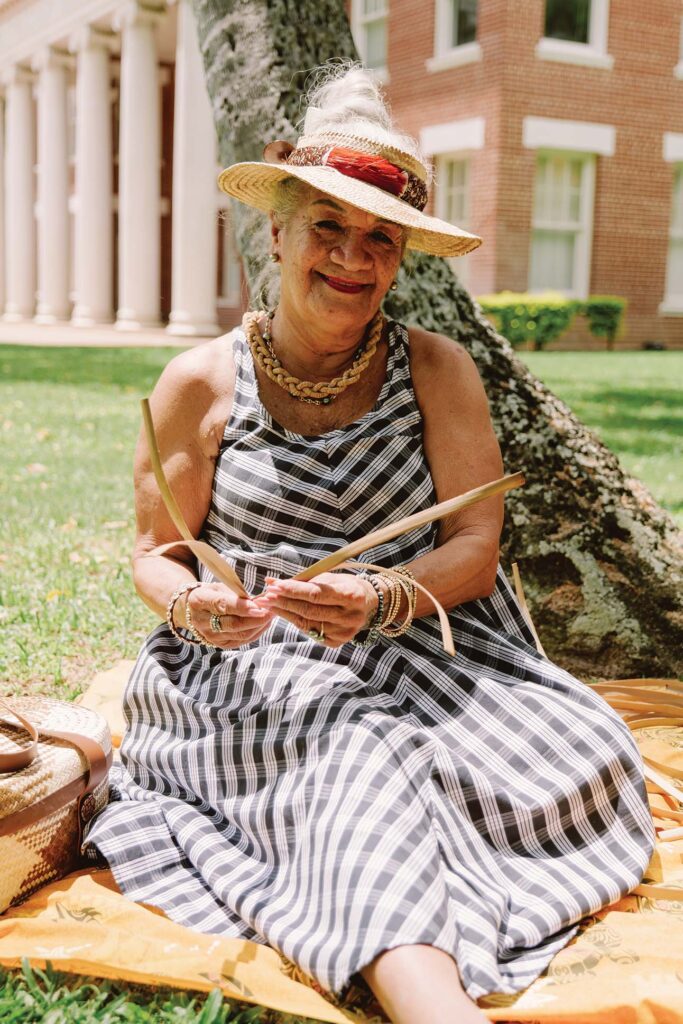
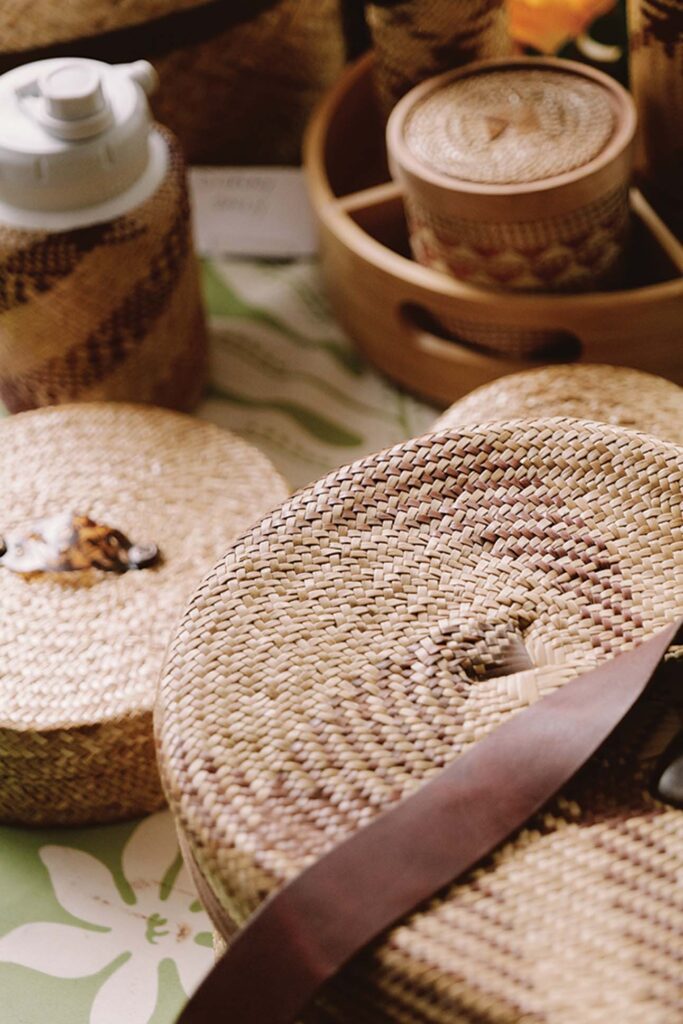
“If you can’t do it this way, try another way. Never give up—that’s number one. Another value is that you must pass it on. It’s not yours to keep. I truly believe you don’t choose lau hala. It chooses you.” — Ipolani Vaughan, Kumu Ulana Lau Hala
Nā Lālā O Ka Pūhala
Nā Lālā O Ka Pūhala was founded by Gwen Kamisugi, a haumana of Aunty Gladys Grace. The group’s name translates to “the branches of the pūhala tree,” a reference to the many kumu and weaving groups that Aunty Gladys nurtured through her teachings. Today, the group continues under Stacie Segovia, herself a student of Kamisugi. Nā Lālā O Ka Pūhala is committed to presenting lau hala in an approachable way and ensuring the craft is accessible to anyone willing to learn.
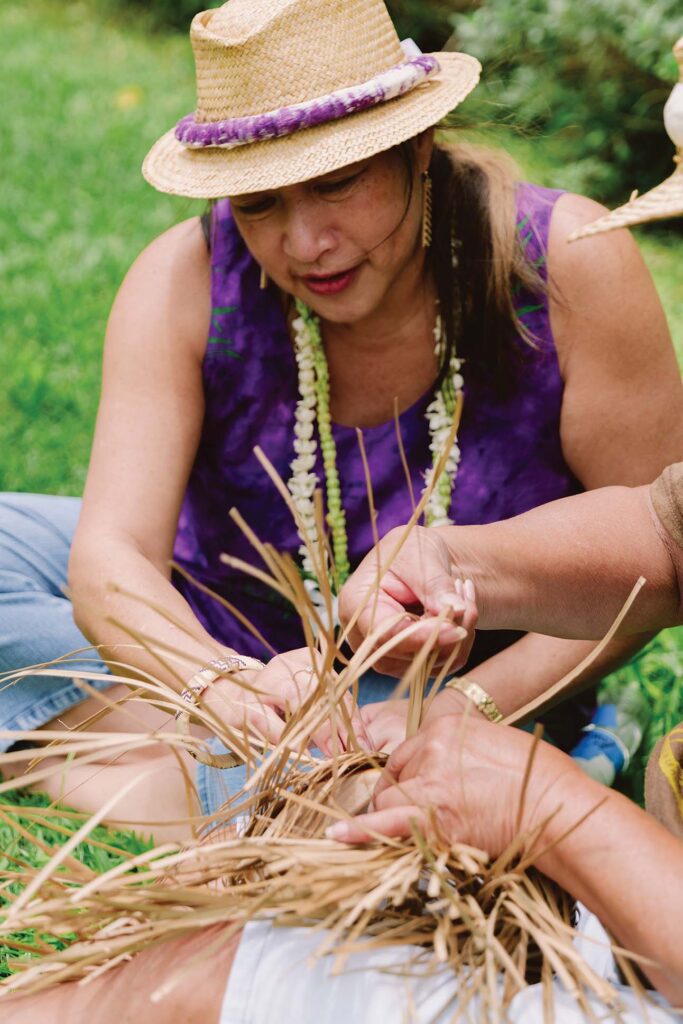

“It was an instant love, you could say. I got so excited that I got my own leaves and just started weaving. But that was when I learned to take a step back. It was like hula in that way. You have to have patience. You have to wait for your kumu to show you how before you can move on to the next thing.” —Stacie Mālama Segovia, Kumu Ulana Lau Hala
“I love the idea of sharing lau hala and making sure that Hawaiians today have the same access to their heritage and their art that their kūpuna (elders) did.” —Stacie Mālama Segovia, Kumu Ulana Lau Hala
Keanahala
Keanahala began in the early 2000s as an informal group that operated out of Nā Mea Hawaiʻi, a Honolulu brick-and-mortar space that carries all things Hawaiian. Gwen Kamisugi, Aunty Gladys Grace, and Aunty Lorna Pacheco began teaching workshops there at the encouragement of Nā Mea Hawaiʻi founder Maile Meyer. Inspired by the work of lau hala practitioners Cheryl and Mahina Pukahi, the group began focusing on the weaving of moena (mats). It was a symbolic undertaking, as it requires many hands to weave moena, and among Keanahala’s tenets is the collective sharing of knowledge. Rather than relying on one kumu, the group has several alakaʻi (leaders) selected for their skill and commitment to the craft.
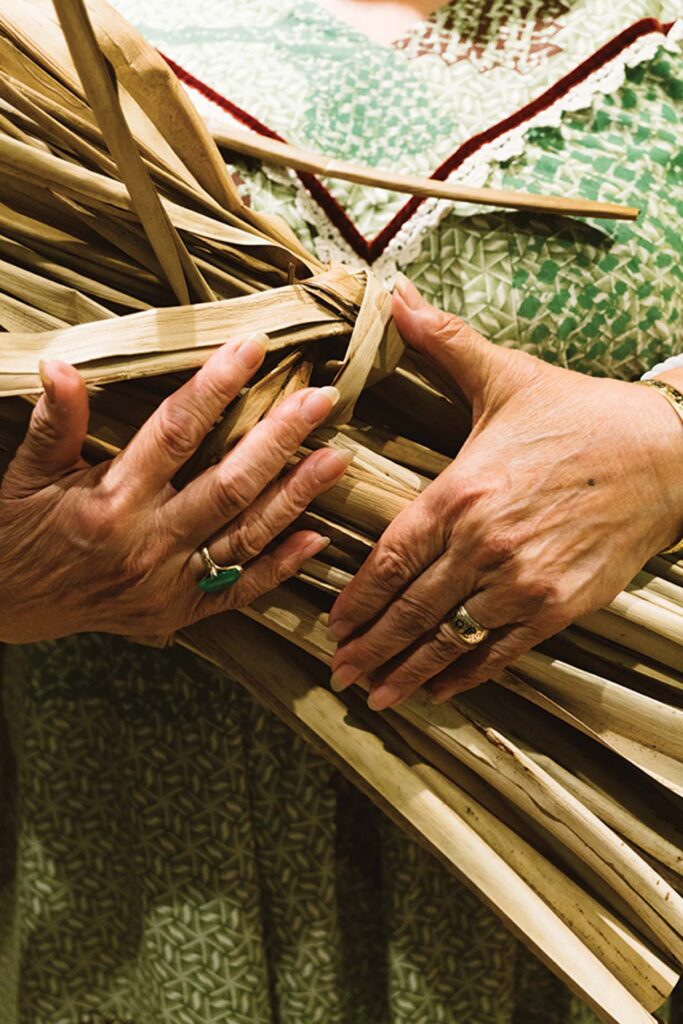
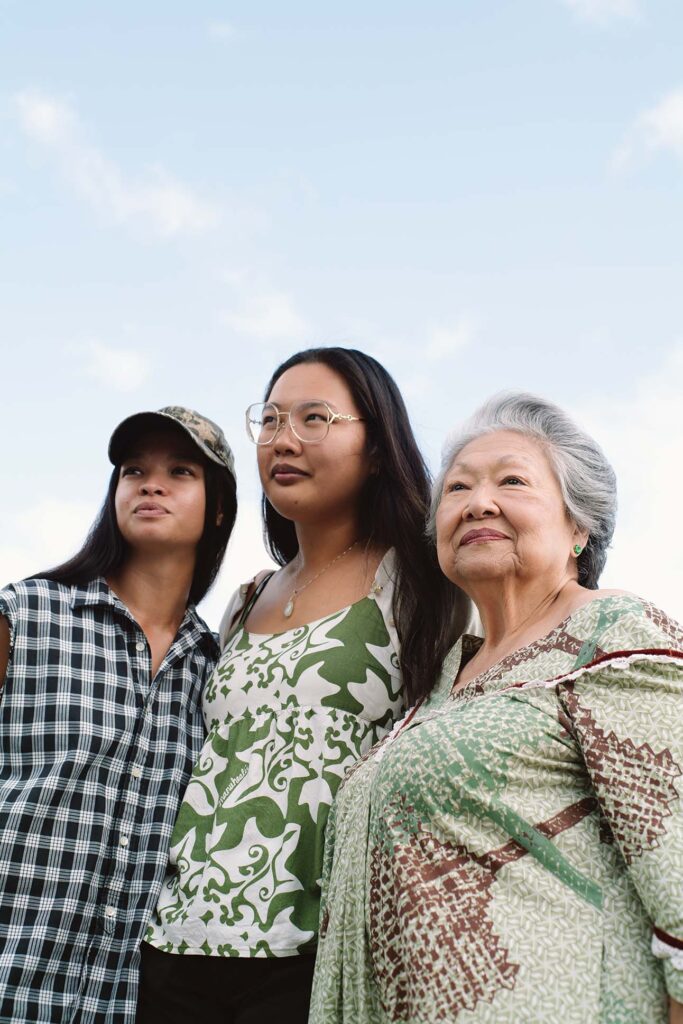
“Aunty Gladys would start off a class by saying, ʻWe’re not only going to learn how to weave, we’re going to learn how to weave our past with our present, which is even more important.’ It’s like that old adage: You have to know where you’ve come from to know where you’re going, and to know who you are.” —Aunty Lorna Pacheco, Kumu Ulana Lau Hala
“We have leads who include practitioners with a deep and wide knowledge from experience and time spent in their practices, as well as young people whose excellence is acknowledged by all. Those leads include Aunty Lorna Pacheco, Lise Michelle Suguitan Childers, and Sarah Kamakawiwoʻole, to name a few. I am a witness to this process. It’s the Hawaiian way, weaving pilina (connection) through time spent with kumu pū hala, the hala tree.” —Maile Meyer, founder of Nā Mea Hawaiʻi
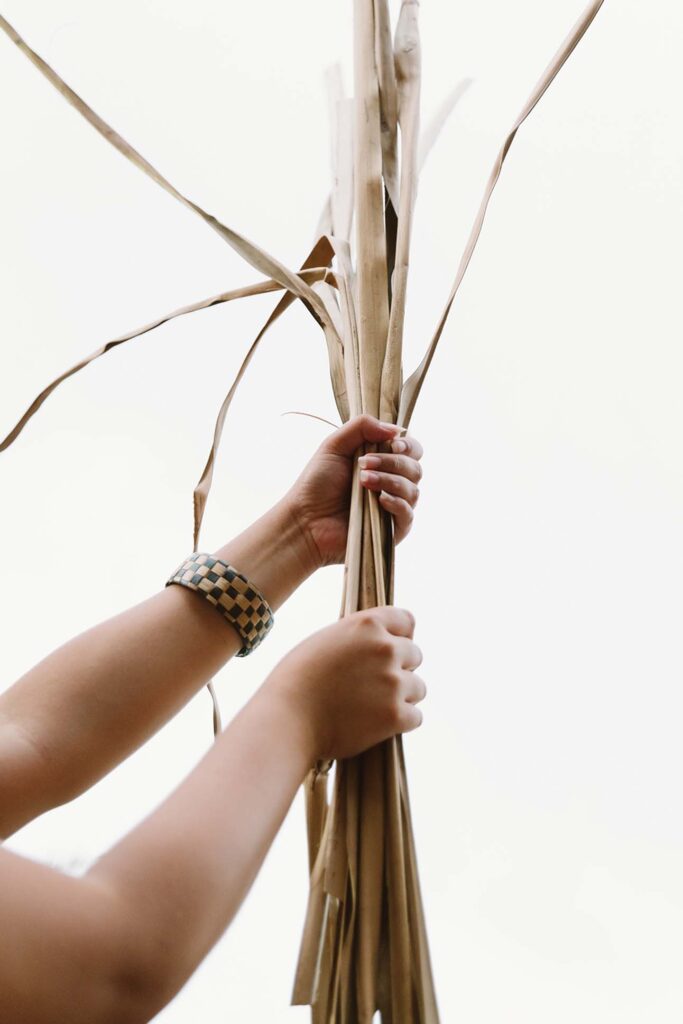
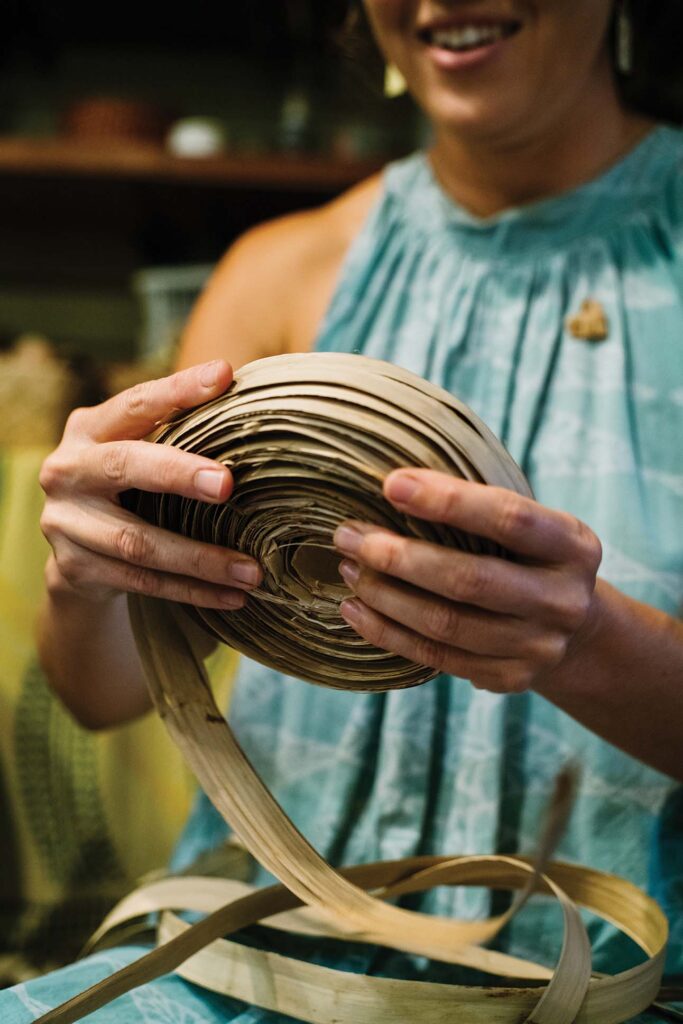
“The name Keanahala speaks to a hala cave, which was where we would have gathered to weave and prep lau, and to be in community with one another. And although we’re not prepping in caves anymore, it harkens back to that idea of how we gather and can continue to gather, even inside Ward Village.” —Emma Broderick, director of Puʻuhonua Society


